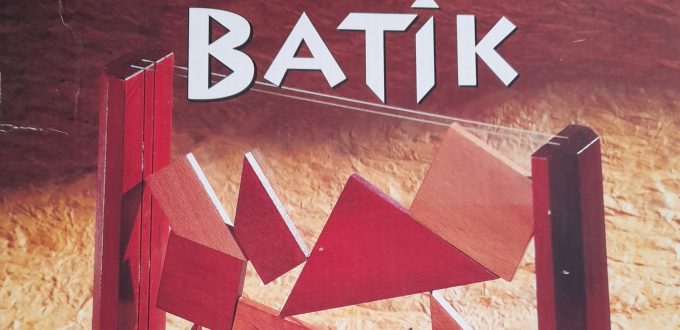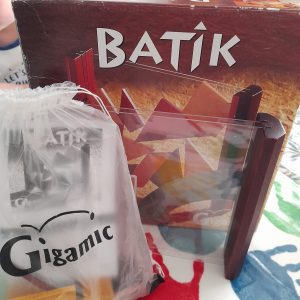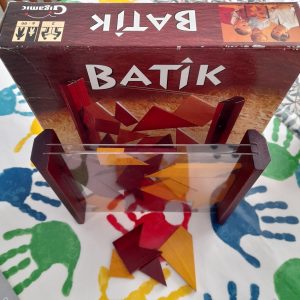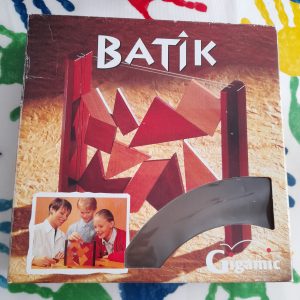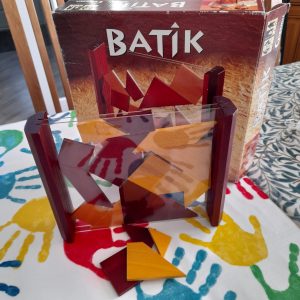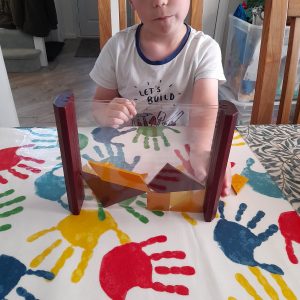Publisher: Gigamic
Designer: Kris Burn
Release date: 1997
2 Players
Age: 8+
5-10 mins
Favouritefoe score: 7/10
* Spatial * Abstract * Dexterity * Simple * Two Player * Easy *
A few weeks ago, we visited a charity shop to donate some clothes and toys. Whilst there, I had a look at the games and puzzles to see if there were any hidden gems.
Whilst Mini-meeple browsed the books, I spotted a small, battered, brown box. The reason it caught my eyes was the “Gigamic” logo printed on the corner. Gigamic has flown onto my radar quite recently via another entity, Hachette Board Games UK. And HBGUK have had the brilliant idea to introduce gamers to some wonderful, never before seen in the UK French games and designers. Indeed, Michons, another game in the favouritefoefunlearning library, is also by Gigamic.
Not content with publisher familiarity, however, I also recognised the name of Batik’s designer. Kris Burn is the well known and respected creator of the GIPF series of abstract strategy games. With such a pedigree behind it, how could I resist for 90p?
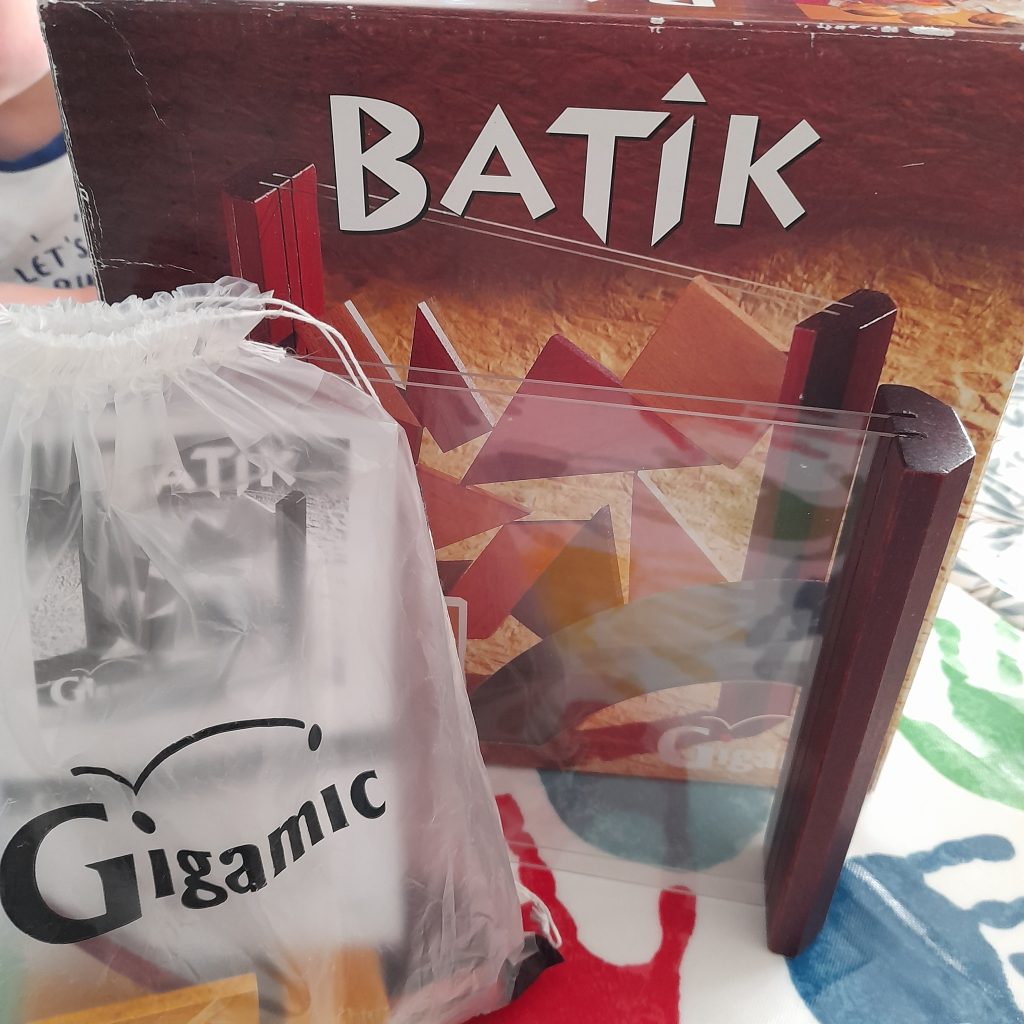
A right handful!
I am not sure whether to call Batik a dexterity game or an abstract game. In truth, I think it is a mix of both, with a spoonful of gravity for good measure.
The components are very simple, and classically abstract. Two sets of 9 wooden shapes (one lighter and one darker), and an open topped window like frame made from Perspex and wood. And that’s it.
The rules and overall objective are just as straightforward; each turn you drop one of your pieces into the frame. Then the other player does the same. You win by forcing the other player to drop one of their pieces into the frame so that one edge or corner sticks out of the top.
If you have more time on your hands (or don’t like to lose so quickly!), you can play a “match”. This is the same as a single game, but the protruding piece is removed from the game each time. Eventually one player will not have enough pieces to force the other player’s piece up and out of the frame. When that happens, the one with the missing pieces loses!
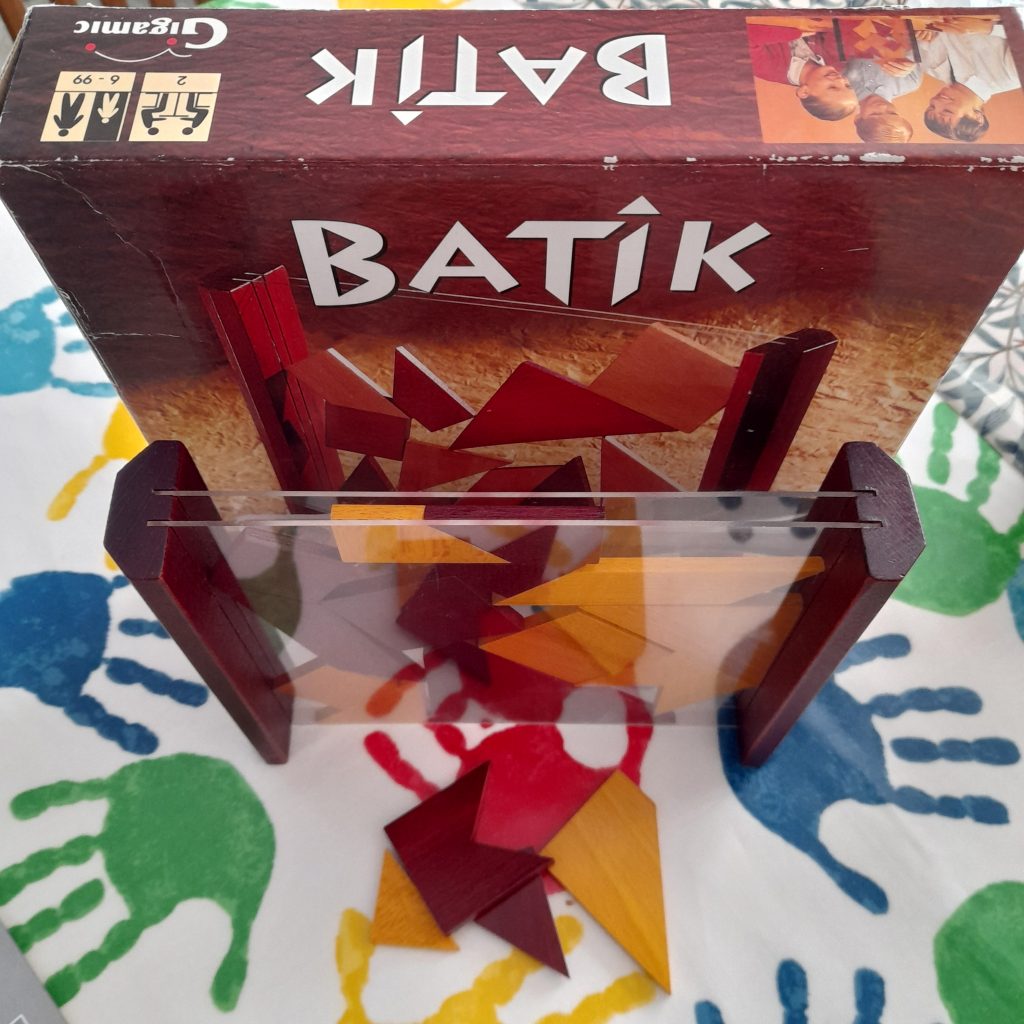
Drop, hope, win!
Ok, so it’s not quite as simple as that. You have to think a little bit about the order in which you place your pieces. Big ones are going to be harder to sneak under the top of the frame so you may want to dump them at the bottom. But you might actually need them further up in order to push your opponent’s pieces out.
The rules state that you cannot exert pressure as you drop. Neither can you wiggle or jiggle the frame; the pieces must lie where they fall. On that basis, you are at the mercy of gravity to some degree. You do, however, have to react to where your opponent drops their shapes, and this will change depending on whether you are in the early or later stages of this rapid fire game. You can also try to change the gamespace by dropping your piece at just the right (or wrong!) angle, which then alters the path to victory once more.
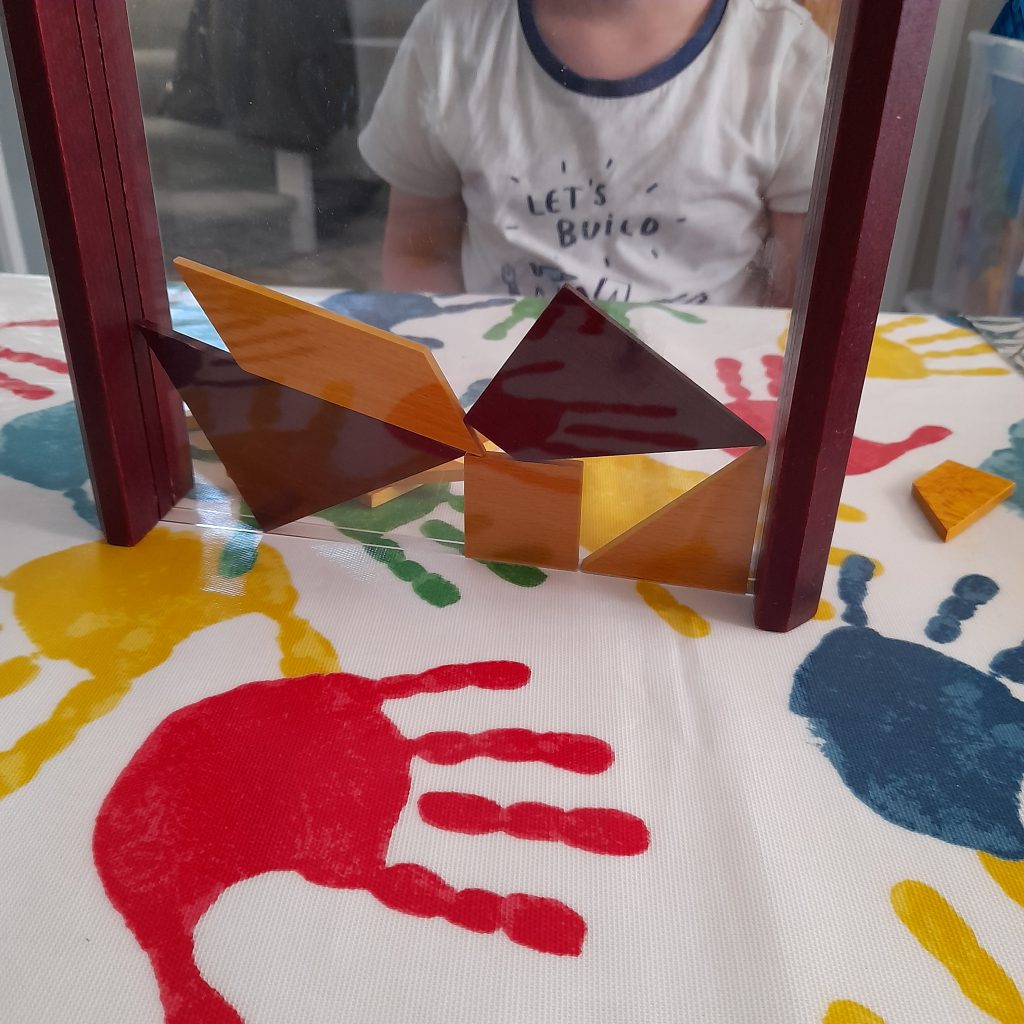
Spatially Shaped!
A simple spatial puzzle wrapped around a dexterity challenge, Batik is learnt fast and plays just as fast. There isn’t a lot to it, but it is enjoyable whilst it lasts.
Mini-meeple likes trying to work out whether there is enough room for his triangle to nestle neatly just below the top. I watch him holding one eye shut, turning the shape around in his hands. Eventually he drops it in, and the result is usually a loud cheer as he knows there’s little to no space left for mine. More recently, however, another reaction has emerged. A magnanimous concession. “It’s ok, I’ll just have to lose that piece, Mummy” is a mature attitude by any standard. Spoken by a 6 year old, it almost floored me.
I must admit that repeated games get a little samey, and sudden movement of pieces can literally knock your best laid plans askew. Even in match mode, where your pieces are at risk if you lose a round, doesn’t ratchet up the stakes that much. But this is a good introduction to abstract games, and it doesn’t seem to need bright colours or complex components to keep little ones engaged. I love seeing Mini-meeple’s cogs turning. And knowing that he is developing his visual and spatial skills, as well as good gaming etiquette, in a something he can easily teach somebody in a few sentences makes this a great addition to the favouritefoefunlearning.

